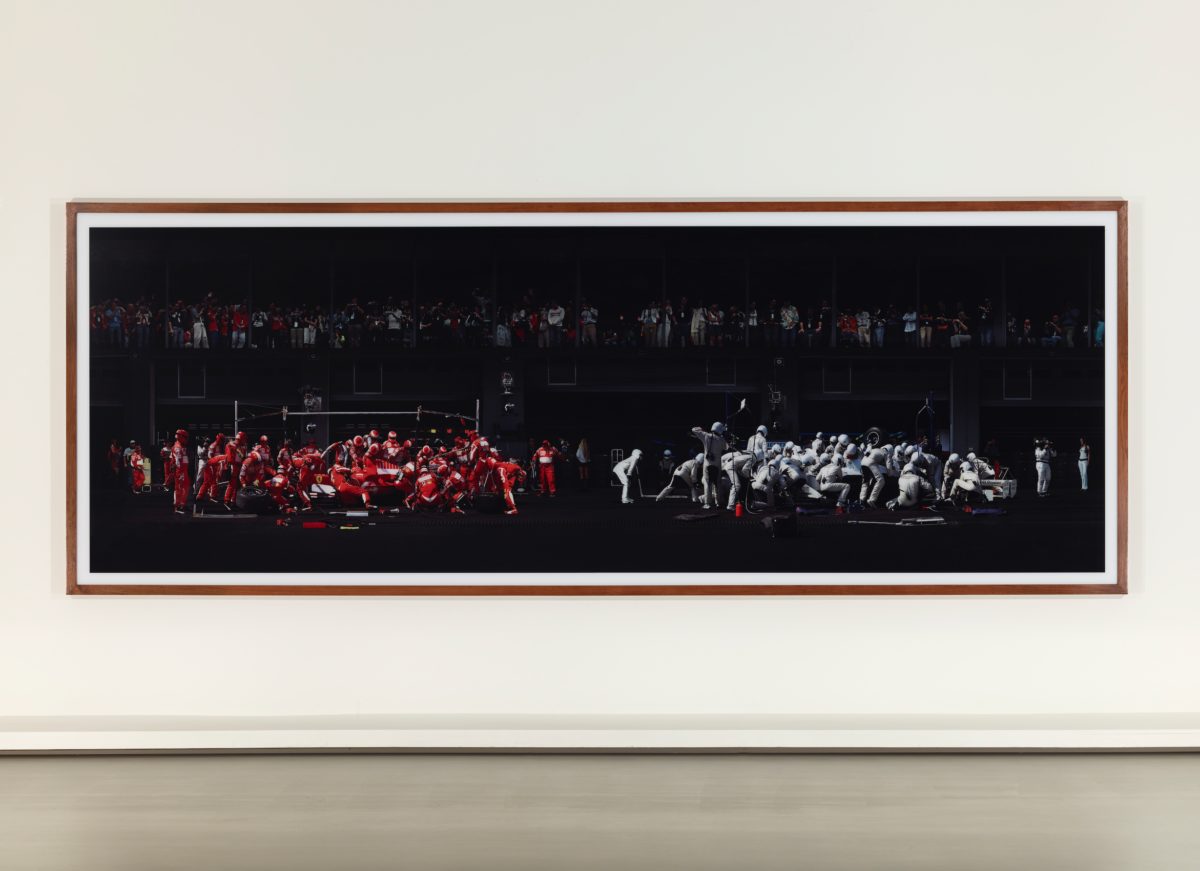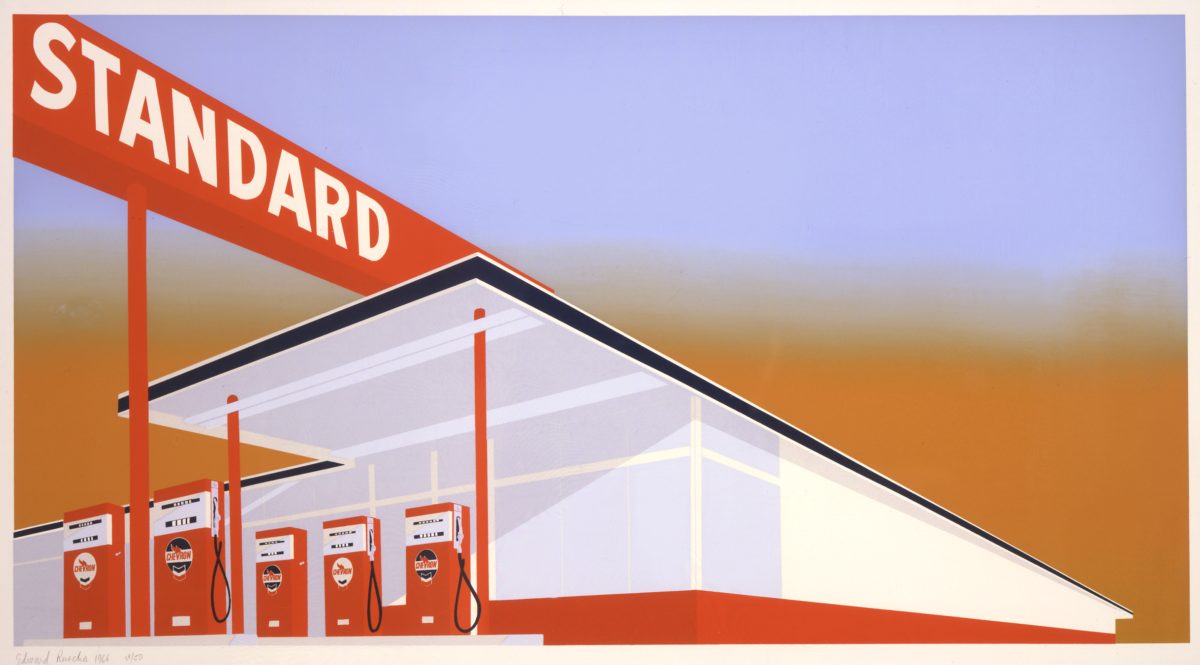A new exhibition at the Guggenheim Museum Bilbao, Motion: Autos, Art, Architecture, celebrates the artistic dimension of the automobile
 Photography: F1 Pit Stop I (F1Boxenstopp I), 2007. Fondation Louis Vuitton/Marc Domage
Photography: F1 Pit Stop I (F1Boxenstopp I), 2007. Fondation Louis Vuitton/Marc Domage
Words by Joe Lloyd
Norman Foster has always been open about his passion for automobiles. As a child, he won a place in grammar school with an essay about a Formula 1 race. In the decades since, he has designed a Buckminister Fuller-inspired Dymaxion car, utilised materials used in vehicle design like neoprene in his buildings and amassed a significant collection of vintage four wheelers. A few years ago, he approached the Guggenheim in New York with an idea for an exhibition that would transmit this passion.
Motion: Autos, Art, Architecture, which opened on April 8th at the Guggenheim Bilbao, explores numerous facets of automobile design. But it is not just a showcase of cars themselves. Vintage and modern vehicles, several from Foster’s own collection, are interspersed with works of art and architecture that celebrate or reflect the car.
 Photography: Ezra Stoller General Motors Technical Center, 1956
Photography: Ezra Stoller General Motors Technical Center, 1956
‘There have been extraordinary exhibitions of works of artists, of works of architecture and there have been extraordinary exhibitions of automobiles but to my knowledge,’ said Foster at the exhibition’s opening, ‘there’s never been an exhibition which brings together all those different disciplines.’
The exhibition has a scale to match this ambition, spreading across ten spaces and seven themed sections. It charts the tale of the automobile from its beginnings — with exhibits including Porsche’s first car and a 1914 Rolls Royce Alpine Eagle — to its future, with an exhibit showcasing cars of tomorrow as designed by students.
 Photography courtesy of the Guggenheim Museum Bilbao
Photography courtesy of the Guggenheim Museum Bilbao
But the sections in-between are more exploratory than strictly chronological, with themes including Sculptures, Popularising, Sporting, Visionaries, and Americana. Diversions include a clay-modelling studio and an immersive sound piece capturing the roar of a racing car.
In this, the show reflects the heterogeneous concerns of the early car designers, who drew influence from a wide variety of fields to create something new. Foster has peppered his exhibition with surprising insights. Visitors learn, for instance, that the car was initially believed to be a cleaner, less polluting alternative to horse-drawn travel, and about the role the wind tunnel played in shaping car design.
 Photography: Edward Ruscha Standard Station, 1966
Photography: Edward Ruscha Standard Station, 1966
There are startling juxtapositions of automobiles and artwork. The photographs of Eadweard Muybridge are connected to an early 20th century interest in speed. A black Alexander Calder mobile parallels the sculptural form of the car.
Ed Ruscha’s familiar painting Standard Station (1966) becomes newly compelling when you ponder what influence its sleekly angled gas station might have had on Foster’s own architectural oeuvre. Stuffed with such moments of intrigue, Motion: Autos, Art, Architecture should thrill those interested in any three of its topics.
Photography courtesy of the Guggenheim Museum Bilbao
Get a curated collection of design and architecture news in your inbox by signing up to our ICON Weekly newsletter
















